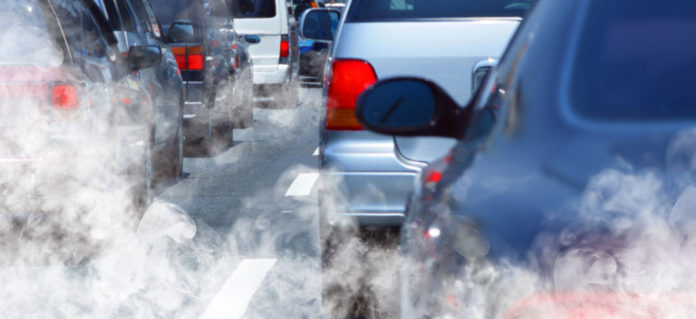Children exposed to diesel-dominated air pollution in London are showing poor lung capacity, putting them at risk of lifelong breathing disorders, according to a study led by Queen Mary University of London, King’s College London and the University of Edinburgh.
The research, published in The Lancet Public Health journal, shows that whilst traffic pollution control measures have improved air quality in London, they still need significant strengthening to protect children’s health.
Air pollution is a leading cause of global mortality, with the World Health Organization estimating over four million deaths annually caused by outdoor air pollution. Children are especially vulnerable and at risk of lifelong breathing disorders, asthma attacks, chest infections and earlier death.
‘Government failing to act decisively’
Professor Chris Griffiths from Queen Mary’s Blizard Institute said: “Despite air quality improvements in London, this study shows that diesel-dominated air pollution in cities is damaging lung development in children, putting them at risk of lung disease in adult life and early death.
“We are raising a generation of children reaching adulthood with stunted lung capacity. This reflects a car industry that has deceived the consumer and central government which continues to fail to act decisively to ensure towns and cities cut traffic.”
Low Emission Zones (LEZ) restrict or penalise vehicle entry into urban areas to encourage the uptake of lower emission technologies. London introduced the world’s largest city-wide LEZ in 2008, roughly contiguous with the M25 orbital motorway and encompassing around 8.5 million residents. But up until now, there has been little evidence on whether LEZs improve air quality or public health.
A loss of 5 per cent in lung capacity
2,164 children aged 8-9 were enrolled into the study from 28 primary schools in the London boroughs of Tower Hamlets, Hackney, Greenwich and the City of London (all areas which fail to meet current EU nitrogen dioxide limits). The research team monitored children’s health and exposure to air pollutants over five years, covering the period when the LEZ was introduced and found:
- Children exposed to air pollution showed significantly smaller lung volume (a loss of approximately 5 per cent in lung capacity). This was linked to annual exposures of nitrogen dioxide (NO2) and other nitrogen oxides (NOx), both of which are in diesel emissions, and particulate matter (PM10);
- Following the implementation of London’s LEZ, there were small improvements in NO2and NOx levels, but no improvements in PM10;
- Despite these improvements in air quality, there was no evidence of a reduction in the proportion of children with small lungs or asthma symptoms over this period;
- The percentage of children living at addresses exceeding the EU limit for NO2fell following the LEZ introduction, from 99 per cent in 2009 to 34 per cent in 2013, but they were exposed to higher levels when at school, many of which were next to busy roads;
- Significant areas of inner and outer London still remain above the EU NO2.
The researchers warn that, at the current rate of change of pollution levels, full compliance with EU limits for NO2 for London remains distant, unless there is a significant tightening of current emission controls.
In the meantime, they say clinicians should consider advising parents of children with significant lung disease to avoid living in high pollution areas, or to limit their exposures.
Urgent need to improve air quality
Dr Ian Mudway from King’s College London said: “There is an urgent need to improve our air quality, especially within our congested cities. Policies such as the Low Emission Zone strive to do this, but their effectiveness needs careful and objective evaluation, not only in terms of whether they improve air quality, but more importantly, whether they deliver better health. As the evidence base grows demonstrating that air pollution impacts on the health of children born and growing up in our cities, so the justification for decisive action increases.”
Dr Samantha Walker, Director of Research and Policy at Asthma UK, said: “It is disappointing that the Low Emission Zone in London has not helped to improve children’s lung capacity and shows that a piecemeal approach to reducing air pollution does not work. If children’s lungs don’t develop properly as a result of air pollution it can increase their likelihood of developing asthma, leaving them coughing, wheezing and at risk of a life-threatening asthma attack. The Government needs to tackle toxic air by putting in place a new Clean Air Act to keep everyone, especially children, safe.”
Professor Frank Kelly from NIHR Health Impact of Environmental Hazards HPRU said: “These new findings linking air pollution and children’s lung growth provide further support for the introduction of the ultra-Low Emission Zone in London early next year.”
(Source: Queen Mary University of London, The Lancet Public Health)










